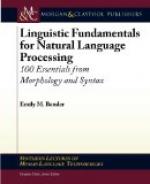I will not be particular in my remarks upon the changes of spoken and written language, altho that topic of itself, in the different sounds and signs employed in different ages and by different nations to express the same idea, would form a most interesting theme for several lectures. But that work must be reserved for a future occasion. You are all acquainted with the signs, written and spoken, which are employed in our language as vehicles (some of them like omnibusses) of thought to carry ideas from one mind to another. Some of you doubtless are acquainted with the application of this fact in other languages. In other words, you know how to sound the name of a thing, how to describe its properties as far as you understand them, and its attitudes or changes. This you can do by vocal sounds, or written, or printed signs.
On the other hand, you can receive a similar impression by hearing the description of another, or by seeing it written or printed. But here you will bear in mind the fact that the word, spoken or written, is but the sign of the idea derived from the thing signified. For example: Here is an apple. I do not now speak of its composition, the skin, the pulp, &c.; nor of its qualities, whether sour, or sweet, or bitter, good or bad, great or small, long or short, round or flat, red, or white, or yellow. I speak of a single thing—an apple. Here it is, present before you. Look at it. It is now removed. You do not see it. Your minds are occupied with something else, in looking at that organ, or this representation of Solomon’s temple, or, perhaps, lingering in melancholy review of your old systems of grammar thro which you plodded at a tedious rate, goaded on by the stimulus of the ferule, or the fear of being called ignorant. From that unhappy reverie I recal your minds, by saying apple. An apple? where? There is none in sight. No; but you have distinct recollections of a single object I just now held before you. You see it, mentally, and were you painters you might paint its likeness. What has brought this object so vividly before you? The single sound apple. This sound has called up the idea produced in your mind on looking at this object which I now again present before you. Here is the thing represented—the apple. Again I lay it aside, and commence a conversation with you on the varieties of apples, the form, color, flavor, manner of production, their difference from




